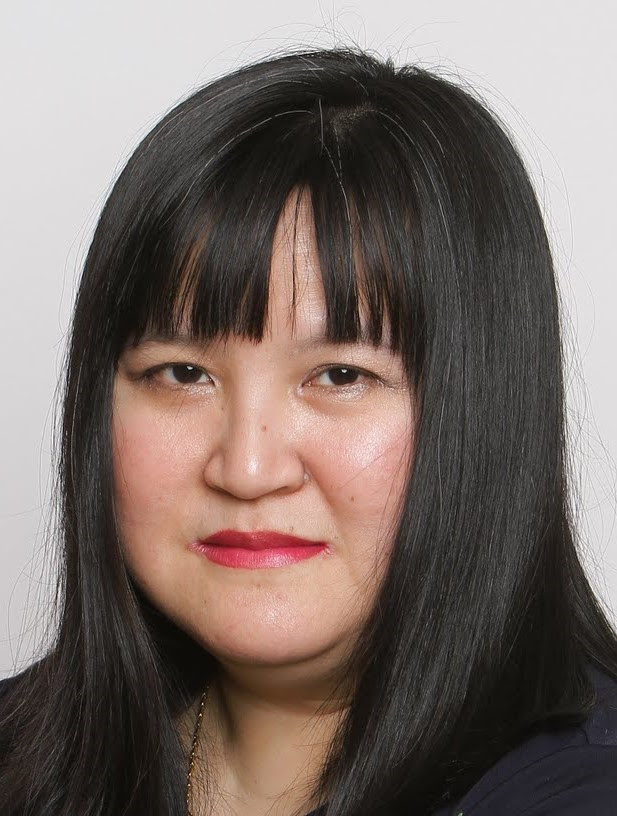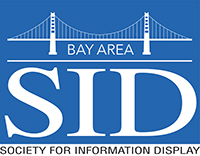Archives 2025
October 9 2025
AI-Powered XR Interactions: The Future of Display Engagement
Sherry Chang, CEO · Neural Lab

Presentation Abstract
"AI-Powered XR Interactions: The Future of Display Engagement"
Today’s displays are passive—they wait for input from keyboards, mice, or touch. But what if displays could understand us through natural human behavior? In this talk, we explore how AI, computer vision, and deep neural networks (DNNs) enable zero-touch interactions, transforming any display into an intuitive, gesture-aware interface.
The talk will include:
1. Real-time gesture & intent detection using cameras and DNNs—no wearables required.
2. Combining gesture control with object recognition for contextual interactions.
3. Interactive demo of Neural Lab’s AI-driven gesture interaction with 3D displays, showcasing seamless, immersive control.
4. The next frontier: Displays that observe, predict, and act—eliminating traditional input devices.
The future isn’t just about detecting motions; it’s about AI understanding human intent and elevating performance seamlessly. Join us to see the technology in action and envision a world where displays anticipate needs, turning every interaction into a natural dialogue.
Sherry Chang, CEO · Neural Lab

September 11 2025
Visualizing Color Volume with Gamut Rings and Modeling the HDR Display
Jeff Yurek, Vice President of Marketing · Nanosys, and Dale Stolitzka, Sr. Principal Engineer · Samsung Display America Lab
Presentation Abstract
Visualizing Color Volume with Gamut Rings
Color volume has emerged as a critical metric for evaluating the real-world performance of modern displays, especially as HDR content and wide color gamuts become standard. Traditional gamut measurements—based on 2D chromaticity diagrams—fall short of capturing the full visual experience of color across varying luminance levels. In this talk, we’ll explore a new approach to measuring color volume using Gamut Rings, a methodology recently adopted by RTINGS.com in their Test Bench 2.0 framework. Gamut Rings provide a more intuitive and visually meaningful representation of a display’s color capabilities in SDR and, potentially, HDR environments. We’ll examine how this method delivers new insights into display performance and helps illuminate the advantages of Quantum Dot (QD) technologies. We’ll also discuss how Gamut Rings may help bridge the gap between engineering metrics and consumer-visible performance with demonstrations.
Jeff Yurek - Vice President of Marketing · Nanosys

Jeff Yurek is Vice President of Marketing at Nanosys, the quantum dot materials company widely credited with bringing QD technology to millions of consumer displays. In this role, he has helped establish partnerships with major manufacturers including Samsung, Vizio, and Hisense.
A recognized authority on quantum dots and display technology trends, Jeff is a frequent speaker and writer on the future of displays. He also serves on several key industry committees, including the Society for Information Display (SID) and the International Committee for Display Metrology (ICDM).
Before shifting his focus to marketing, Jeff worked as a creative professional. Today, he continues to blend storytelling with technical insight to shape the narrative around cutting-edge display innovation.
Presentation Abstract
Modeling the HDR Display
As reported recently in the July/August issue of Information Display, “The Helmholtz-Kohlrausch is a perceptual phenomenon in which the perceived brightness of a color is influenced not only by its luminance—the amount of light it emits—but also by its saturation, or purity of color. In simpler terms, highly saturated colors tend to appear brighter to the human eye than less saturated ones, even if they have the exact same objective luminance measurement.” While metrology experiments report physical capabilities, the designers who will optimize HDR performance and user experience must understand the implications of this phenomenon that eludes our equipment. The H–K effect highlights the gap between objective light measurements and subjective human perception. Relying only on wattage that may increase luminous intensity; however, it is neither subtle nor cost effective as a means to increase brightness – a perceived quantity. Owing to the H–K phenomenon, modern display technologies, especially those with wider color gamuts, such as OLED and QD-OLED displays, enhance the perception of brightness and vividness without increasing the display’s overall luminance. We conclude by showing methods that quantify visual perception through color appearance models in 2D and 3D analyses. These tools quantify the H-Keffect and describe HDR display using volumetric uniform color space representations.Dale Stolitzka - Affiliation: Samsung Display America Lab, San Jose, CA

August 14 2025
New Perspective on Old Problems: Modern Display Failure Analysis
Dr. Evan Brown, Exponent, Vice President & Principal Engineer, Material Science & Electrochemistry Practice

Presentation Abstract
Dr. Evan Brown, Exponent, Vice President & Principal Engineer, Material Science & Electrochemistry Practice

July 10 2025
Yield and Manufacturing Challenges for MicroLED Micro-displays
Dr. Soeren Steudel, MICLEDI Microdisplay BV, CTO & Co-founder

Presentation Abstract
Why is it so difficult to ramp-up volume manufacturing of microLED microdisplay with decent yield and cost?
Tight pitch integration of compound semiconductor with advanced node CMOS like in microLED displays requires a full wafer level monolithic approach. Dedicated microLED display fabs are hereby an unlikely solution since older generation fabs used for compound semiconductor (e.g. 4”-6”) do not have the capability and precision while Si-CMOS fabs (e.g. 200mm/300mm) require a very large CAPEX that during the slow AR market ramp up would be under-utilized for several years. Process and tool compatibility to existing CMOS foundries is therefore a must.
At pitches below 5um, the CMOS bonding is at the center and cannot be considered as an afterthought of a great LED process. In this presentation we discuss different option for CMOS integration, color generation and how they influence cost effective volume manufacturing.
Finally, we present an update on MICLEDI 300mm foundry integration approach implemented using standard volume manufacturing equipment with a similar integration scheme as is done for 3D-stacked backside illuminated imager (BSI). This includes the realization of wafer level optics for beam-shaping.
Dr. Soeren Steudel, MICLEDI Microdisplay BV, CTO & Co-founder

June 18 2025
Display Week 2025: What's New?
Paul Semenza, Department of Engineering Management and Leadership, Professor and Chair at Santa Clara University

Presentation Abstract
Paul Semenza, Department of Engineering Management and Leadership, Professor and Chair at Santa Clara University

April 10 2025
Advancements in Optical Metrology and Demura Technologies for Microdisplay Testing
Dr. Gang Wang, Director of Technology Center, HYC Jiaxi Zhou, Optical Engineer, HYC
Presentation Abstract
Dr. Gang Wang, Director of Technology Center, HYC

Dr. Wang received Ph.D. in Optical Engineering from the Changchun Institute of Optics, Fine Mechanics and Physics, Chinese Academy of Sciences. Completed postdoctoral research at the State Key Laboratory of Polymer Physics and Chemistry, Changchun Institute of Applied Chemistry. He has over 20 years of experience in the TFT-LCD, AMOLED, flexible display, Oxide TFT, and PLED industries.
Dr. Wang previously held senior positions at BOE Technology Group, CSOT (China Star Optoelectronics Technology), and Visionox. Currently, he worksfor the technology center of Suzhou Huaxing Yuanchuang Technology Co., Ltd, and in charge of the development of advance technologies for inspection equipments. His contributions have been recognized with honors such as the Beijing Science and Technology Award and the China Excellent Patent Award.
Jiaxi Zhou, Optical Engineer, HYC

March 20 2025
Design of Holographic Display Systems Based on Artificial Intelligence
Dr. Suyeon Choi, Postdoctoral Scholar at Stanford University
Presentation Abstract
Dr. Suyeon Choi, Postdoctoral Scholar at Stanford University

February 27, 2025
Quantum Dots for Thin Optical Conversion
Dr. David O’Brien, Director QD Materials, ams OSRAM
Presentation Abstract
Dr. David O’Brien, Director QD Materials, ams OSRAM

January 30, 2025
Holographic Displays for Augmented Reality
Dr. Edward Buckley, Vice President
Presentation Abstract
Dr. Edward Buckley, Vice President

To view past year archives visit: https://www.sid.org/Chapters/Bay-Area/SeminarArchive



